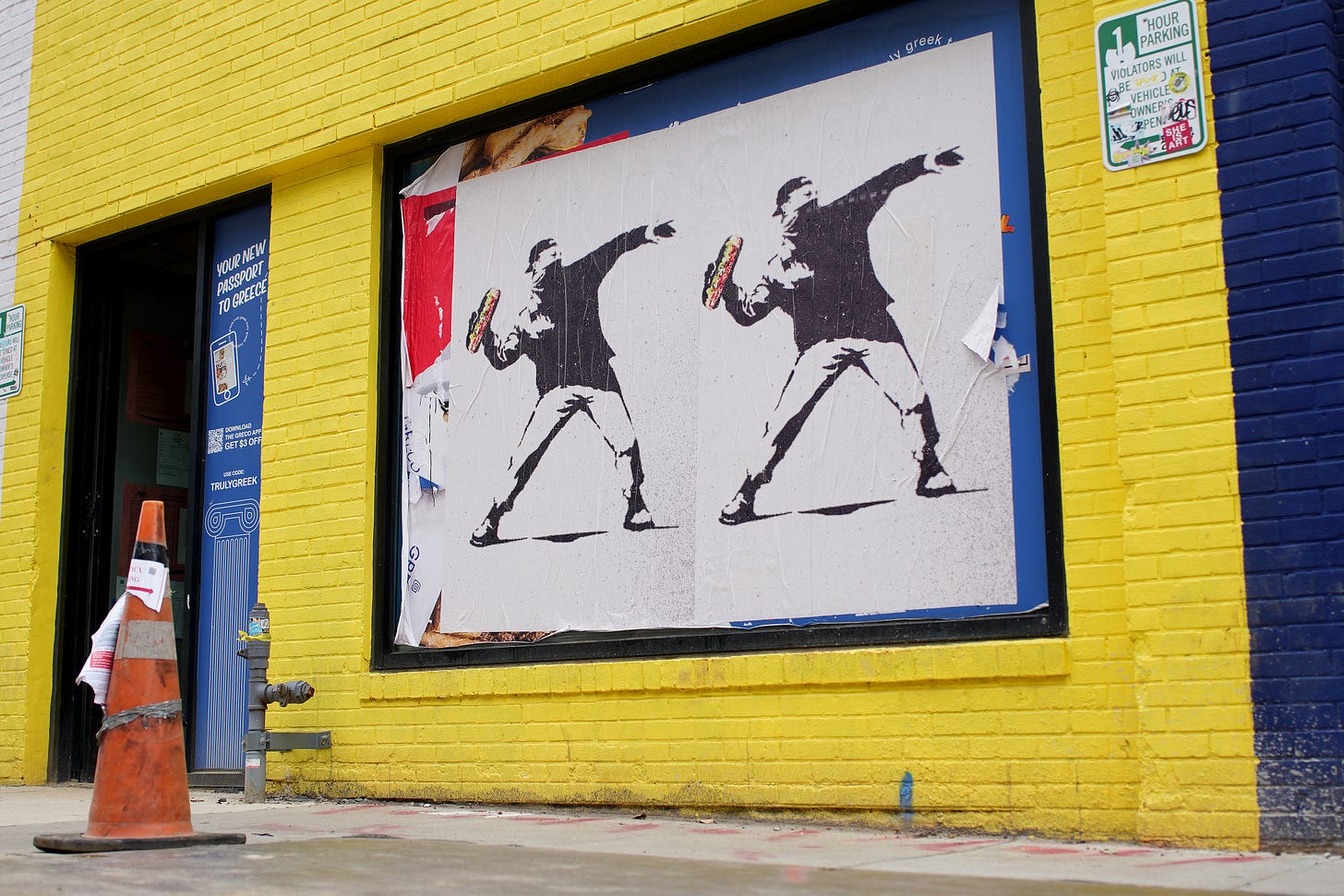
THESE ARE DARK DAYS FOR AMERICAN lovers of liberty, so any glimmers of light are especially welcome.
Let’s start with “Sandwich Man.” The world knows him as the pink-shirted guy who shouted at federal agents patrolling the streets of Washington, D.C. After some aggressive language and pungent invitations to get lost, Sean C. Dunn then tossed a sandwich, hitting one of the officers (who seemed to be wearing body armor!) in the chest. Dunn ran (demonstrating impressive athleticism, if I may say so). Weighed down by gear, the agents lumbered after him, eventually catching him a few blocks away and placing him under arrest. “I did it,” he confessed. “I threw a sandwich.” He was later released.
End of story? Not at all. Jeanine Pirro, the U.S. attorney for the District of Columbia, sent more than a dozen U.S. Marshals and FBI agents in full tactical gear to Dunn’s house to arrest him again the next day. Pirro then starred in a video of her own, declaring, “Assault a law enforcement officer and you’ll be prosecuted. This guy thought it was funny—well, he doesn’t think it’s funny today because we charged him with a felony.” Attorney General Pam Bondi chimed in to say that she had just learned that Dunn had been employed by the Department of Justice, but no longer. She fired him, she said, and charged him with a felony because he represented the “Deep State” they were fighting.
It was an absurd overcharge. It’s been called an “assault with a breadly weapon.” A misdemeanor? Sure. You shouldn’t throw things at people. But a felony, carrying a penalty of years in prison and thousands in fines? Please. Across Washington, D.C., posters and street art featuring the likeness of Sandwich Man proliferated—the flowering of popular protest. And then an interesting thing happened: The grand jury declined to return an indictment.
There are a few things to bear in mind about grand juries. They hear evidence only from the prosecution, not from the defense, and the standard for bringing an indictment is only probable cause, not preponderance of the evidence or proof beyond a reasonable doubt. That’s why it’s often said that a prosecutor can get a grand jury to ‘indict a ham sandwich’—but not, it seems, Sandwich Man.
Nor was this a lone example. Just a few days earlier, the Justice Department was obliged to reduce the charges against Sydney Lori Reid, who had been involved in a protest against federal agents attempting to transfer two people the government characterized as “gang members” into custody. Reid filmed them and placed her body between the officers and the men, resulting in some pushing and shoving in which an FBI officer’s hand scraped against a brick wall resulting in injury. The government charged Reid with forcibly “assaulting, impeding, or interfering with federal agents,” a felony that could carry an eight-year sentence upon conviction. They presented the case to a grand jury, but the jury declined to indict. They then empaneled another grand jury with the same result. And then a third. The citizens on all three juries said no.
These Washingtonians continued a long and venerable tradition of using the power of juries to stymie government overreach. In 1735, a jury declined to convict John Peter Zenger of seditious libel for criticizing the colonial governor, establishing a key precedent about press freedom. In the antebellum North, juries often refused to convict defendants who violated the Fugitive Slave Law, thereby expressing their contempt for legislation that dishonored the nation. (Of course, jury nullification can also deny justice, as untold numbers of juries did by acquitting Klansmen in the South during Reconstruction and Jim Crow.)
SANDWICH MAN HAS ALLIES in his resistance to injustice.
Lisa Cook is also supplying some welcome fight. Instead of retreating quietly after Trump attempted to fire her from the Federal Reserve Board, she declared her intention to sue on the grounds that Trump lacks the authority to fire her. “President Trump purported to fire me ‘for cause’ when no cause exists under the law, and he has no authority to do so. I will not resign. I will continue to carry out my duties to help the American economy as I have been doing since 2022.”
Gov. Gavin Newsom is mocking Trump, which may have no immediate payoff but raises the spirits of those in need of it. Whether his tactics will prove wise in the long term—and there are reasons to suspect they will not—at least he is flexing resistance muscles while others sit by numbly waiting for someone else to act.
Gov. JB Pritzker, less showy but not less effective than Newsom, delivered a forceful, intelligent, and carefully reasoned repudiation of Trump’s threat to deploy troops to Chicago. He began by saying, “If it sounds to you that I’m being alarmist, that’s because I am ringing an alarm.” Pritzker made the point that crime is down, not up, in Chicago and emphasized that Trump’s approach neglects successful crime-fighting techniques. But more importantly, he excoriated Trump’s threat as a transgression against American law, tradition, and decency. He further urged all who might resist to do so peacefully, reminding them that the National Guard troops dragooned into this duty could very well be doing so unwillingly, subject to court martial if they disobeyed. It was the kind of message Americans need to be reminded of as Trump attempts to push us into civil conflict, which he could then use as cover for even more despotic power grabs.
Hats off to the good citizens of the District of Columbia and the others who are meeting this moment with signs of fight and the recognition of what we’re facing.
Source link


